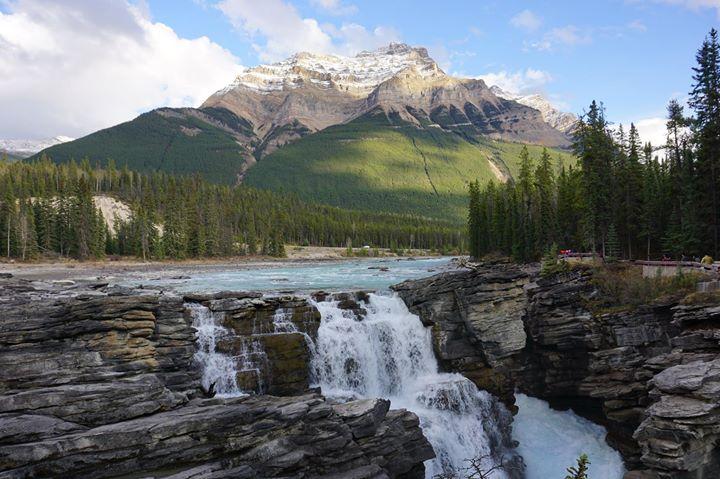-
Posts
1470 -
Joined
-
Last visited
-
Days Won
446
Content Type
Profiles
Forums
Events
Everything posted by UmarMakhzumi
-
You can buy LPile from here: http://www.ensoftinc.com/products/lpile/ Thanks.
- 10 replies
-
- sefp consistent design
- piles
-
(and 1 more)
Tagged with:
-
Practicing engineering helps us put food on table.. being an engineer is what will make us wealthy! Being an engineer means being smart in every aspect of life.. Might be little narcissistic but I wanted to share my recent run on stocks! Enjoy and good luck to y’all as well!
-
Pile caps are designed as slabs. For the case where you have a big pedestal on a pile cap, your pedestal is designed as a column and pile cap is designed as a slab taking the loads from the superstructure through the pedestal to piles. You need to check moment, one way shear (perpendicular and diagonal directions) and two way shear for pile cap. Thanks.
- 10 replies
-
- sefp consistent design
- piles
-
(and 1 more)
Tagged with:
-
You don't need a ledge beam when you can use a truss. I think ledge beam is redundant. Neoprene pad is good on the roller side. If you can share some sketches, I would happily comment on them. Thanks.
-
Please check this article: Thanks.
-
*SEFP Consistent Design**Pile Design**Doc No: 10-00-CD-0005**Date: Nov 21, 2017* This article is intended to cover design of piles using Ultimate Limit State (ULS) method. The use of ULS method is fairly new for geotechnical design (last decade). The method is being used in multiple countries now (Canada, Australia etc). The following items shall be discussed: Overview Geotechnical Design of Piles (Compression Loads, Tension Loads and Lateral Loads) Structural Design of Piles (Covering both Concrete and Steel) Connection of Pile with the foundation (Covering both Concrete and Steel) Pile Group Settlement Things to consider 1. Overview Piles provide a suitable load path to transfer super-structure loads to foundation where shallow foundation are not suitable - this can be due to a number of reasons like existing space constraints or suitable soil strata is not present immediately below structure. Other uses can be to meet design requirements like to have reduced settlement etc. This article shall cover the use of straight shaft cast-in-place concrete piles and straight shaft driven steel pipe piles. There are a number of additional piles types like belled concrete piles, precast concrete piles, screw / helical steel piles etc but the discussion to choose a suitable pile type is not in the intended scope of this article. The article is intended to discuss design requirements for straight shaft piles only (both concrete and steel) . The aforementioned topic about pile selection is a very diverse subject and requires a separate discussion on its own. Before I get into the nitty and gritty of pile design, it is important to highlight that as a structural engineer working on pile design, there are a number of parameters that you would require from the geotechnical engineer. Generally, these parameters are provided in the project geotechnical report. Based on those parameters, the geotechnical design of piles is performed first followed by structural design of pile. The next section talks about the geotechnical design of piles. 2. Geotechnical Design of Piles. Geotechnical design of pile means sizing of pile. This includes determining the following two geometric properties of piles: 1) Diameter or radius 2) Length Straight shaft piles embeded in soil derive their capacity from two sources. The first one is the skin friction along the pile length and the second one is the end bearing. In order to complete the geotechnical design of piles or in simple words to "size up the piles", you will need skin friction values for different soil strata through which the pile would penetrate or lie and the bearing capacity of the layer in which pile would terminate. This information is provided by the geotechnical engineer in the project geotechnical report. Generally, they would provide a table showing skin friction values of each soil layer for both tensile and compressive loads along with end bearing values of each layer. In addition to this, for areas susceptible to frost loading, the geotechnical engineer would also provide ad-freeze and frost heave forces. You can't design a pile without knowing what these values are. So this is something that you need from a geotechnical engineer. Once you have received the project geotechnical report with all the required information, you need to start sizing the piles. The easiest way to do it is to create an excel sheet and do preliminary calculations for different standard diameters like 200mm, 324 mm, 406mm, 460mm, 508mm, 610mm, 762mm and 914mm. The geotechnical report shall also provide recommendations if certain top soil layers need to be ignored or not. Example Problem: From your structural analysis, the maximum factored compressive load is 100 kN. and maximum factored tensile load is 50 kN. You need to size a pile (do geotechnical design) to meet that applied load. Sizing piles for geotechnical capacities is simple. Here is the formula for capacity of pile based on skin friction only (ignoring end bearing for simplicity): ULS Geotechnical Pile Axial Capacity: Pi * Pile Diameter * Total Embedment Length of Pile * Skin Friction Value * Resistance Factor Where, Pi= 3.14 Pile Diameter = 2* Radius Total Embedment Length of Pile = Pile Embedment Length - Frost Depth Skin Friction Values = See geotechnical for values Resistance Factor = 0.4 for compression and 0.3 for tension. For, the above problems, lets assume Skin Friction values of 80 kPa for both tension and compression and initial pile size (diameter) of 324 mm, Frost Depth of 3000 mm. For total length of 10m (lets assume a starting length), Total Embedment Length of Pile = 10m - 3m = 7m (Total Length - Frost Depth) ULS Geotechnical Pile Compressive Capacity= 3.14 * (0.324m) * 7m * 80 kPa * 0.4 = 228 kN > 100 kN Okay. ULS Geotechnical Pile Tensile Capacity = 3.14 * (0.324m) * 7m * 80 kPa * 0.3 = 171 kN > 50 kN Okay. The above problem shows you how to calculate the compressive and tensile capacities (also called the axial capacities) of the pile. For lateral capacity, you will need to know the modulus of sub grade information from the geotechnical engineer and use a software like LPILE to see the response against the lateral load. It is important to note that lateral deflection of pile is a service limit state meaning that it should be checked against unfactored loads. Generally, for petrochemical and oil and gas industries, pile service loads are defined as a deflection limit that will depend upon the maximum allowable movement of pile considering an elastic response from soil as well as the maximum movement piping and its attachments can take. Here is a scenario explaining that. For example, your geotechnical engineer recommends a maximum lateral movement of pile to be limited to 6mm so that soil around pile stays elastic. The structure you are designing, has a wind load deflection of 12mm. The pipes and equipment plus their connections shall be designed for 6mm+12mm = 18mm movement of structure. You need to notify piping of this deflection limit and if they are okay, you are good. If they are not, you will have to stiffen up the structure to lower the overall structure deflection and work with piping to see alternate routing for pipe. For pile design, you need to see what diameter pile shall have a capacity at 6mm lateral deflection greater than the applicable horizontal service load. To calculate pile capacity for different pile head movements, you will need to use LPILE or similar software. LPILE shall provide you a graph that would show you that how much a pile would move under applied lateral load or moment. LPILE is very easy to operate. You can look at the program tutorials and work your way through. It will also provide you the analysis results for a pile embeded in soil with soil modelled as springs along the length. This analysis result is important and allows us to see what is the maximum moment and shear developed in pile due to applicable load and based on combined response of soil and pile interaction. If you don't have LPILE, you can ask the geotechnical engineer, to provide you with pile lateral capacity graphs. In this case, you will need to provide the geotechnical engineer with estimated pile sizes, estimated axial and lateral loads, pile head condition (Fixed or Pinned) upfront. The goetech engineer will run the LPILE for you and provide you the graphs that will show the maximum load a pile can take against different lateral displacement values and would also provide the maximum moment due to max lateral load. I have done this on a number of projects and this is standard industry practice. 3. Structural Design of Piles. After completing the geotechnical design of pile, the structural design of pile needs to be performed. In order to do that, you will need to know the maximum moment in pile due to the application of axial and lateral loads. As mentioned above, the easiest way is to use LPILE output as it provides you with deformed shape of the pile along with the maximum moments and shears due to applied loads - the analysis of pile embedded in soil. Using LPILE analysis results, you can use beam-column capacity formulas to design a steel pile or column interaction diagram to design a concrete pile. Beam-Column capacity formulas vary with different codes so therefore I haven't included any example. For steel piles, corrosion allowance should be considered as per the code requirements. Generally its 1.5mm each exposed face so for pipe piles it will be 3mm considering exterior and interior face of the pile. 4. Connection of Pile with the foundation (Covering both Concrete and Steel) The connection of pile and foundation / pile cap is extremely simple for concrete piles. All you need to do is to develop the bars from concrete pile in concrete foundation/ pile cap. For steel piles, similar concept is there, except for you need to weld rebars on top of cap plate. 5. Pile Group Settlement Single pile or pile groups should always be check for settlement. Geotechnical consultant shall be contacted to get guidance on what method should be used. Methods like equivalent raft method or finite element analysis can be carried out to get settlement numbers. 6. Things to Consider For pile group, group effects are generally provided by the geotechnical engineer that can be applied to pile group. The group effects are a function of pile diameter and centre to centre spacing. Pile capacities are reduced if they are spaced closely. For straight shaft piles, rule of thumb is to place them greater or equal centre to center distance of to 3 * diameter of pile. For lateral loads, pile capacities are reduced at 3 * diameter spacing and generally piles need to be spaced at 5 * diameter to have no lateral reduction. Also, straight shaft piles if placed too close might result in pile installation issues. Some piles already installed might heave up if other piles are being installed in close proximity. Impact of pile driving to existing structures should also be considered especially if there is sensitive instrumentation installed in close proximity. Hope this article provides the much needed guidance on pile design. It is written for beginners and a lot of things have been kept simple. Your feedback is more than welcome. Please post any questions should you have. Thanks.
- 10 replies
-
- sefp consistent design
- piles
-
(and 1 more)
Tagged with:
-
Eccentricity can be due to construction activities. There is always construction tolerance that needs to be considered in design. Thanks.
-
Hello, i don’t have the specific experience but wouldn’t mind discussing it. You can share your truss connections concepts and I am willing to provide feedback on it. Also, there is a similar topic on forum that you might find useful. Thanks.
-
Welcome aboard Omar
-
You need to check that. Consider the new foundation footprint, calculate bearing pressures, check moment at critical sections and see if that still works based on new column load and new foundation area. Similarly, you need to calculate shear and moment the the joint of jacket and existing foundation and make sure there are enough dowels to transfer that across. Thanks.
-
Hi Faisal, Please see my comments on your sketch below. I would suggest to add more shear reinforcement (at least 2 layers, one looks flimsy) between existing foundation and the jacket. Obviously, it would be based on your calculations to transfer punching shear, one way shear and moment. Also, I would suggest to add shear connectors/ dowels/ nelson studs to all vertical faces of the foundation and provide continuous reinforcement as shown connecting periphery jacket beams and new pour. Also, if you are excavating around existing foundations, please give some thought to that so that the excavation doesn't undermine adjacent foundation. Hope that helps. Cheers!
-

creation of Account
UmarMakhzumi replied to udas bugti's topic in Website Announcements/ Problems/ Login/ Registration Issues
You are already posting on the forum with an account? I am not sure what the problem is. Can you explain please? -

Shear profile for an infilled RC frame
UmarMakhzumi replied to Samra Masood's topic in Seismic Design
Please see this: Thanks. -
Dear Zaid, You can find it out my modelling the bridge in a structural software with appropriate boundary conditions. If you can share the details, someone here might volunteer to do it for you. Not sure but there is a chance. Thanks.
- 2 replies
-
- modal frequency
- natural frequency
-
(and 1 more)
Tagged with:
-
Have you tried changing base shear numbers to see if the infills would fail on increased base shear number? Also, is your concern related to something nothing lining up with your expectation.. for example, the infill should have failed based on thumb suck calcs but it is not failing and is that why you are concerned? Thanks.
- 3 replies
-
- masonry infill walls
- masonry infill
-
(and 1 more)
Tagged with:
-

Comparison of European and American Seismic Codes
UmarMakhzumi replied to Fatima Khalid's topic in Seismic Design
Wsalaam, Source: https://www.degruyter.com/downloadpdf/j/mmce.2013.9.issue-1/mmce-2013-0001/mmce-2013-0001.pdf Hope that helps. I have also attached the document here so it is easy to download. Thanks. Comparative Study of Codes for Seismic Design of Structures.pdf -
Increase the size of the beam. Thanks.
- 3 replies
-
- displacement
- high
-
(and 1 more)
Tagged with:
-

bearing capacity Bearing Capacity in Karachi
UmarMakhzumi replied to Usman Altaf's topic in Foundation Design
Hi Usman, It is as good as any one's guess as the bearing capacity would vary greatly within the city based on geology of the land. 0.5 Tsf would be conservative. Thanks. -

Etabs, SAFE, SAP2000 Books, Tutorials and Guidelines
UmarMakhzumi replied to Ahsan Kazmi's topic in Spreadsheets & Softwares
@EngrUzair has replied well to your question. I will just add that the most important thing while using any software is to know its limitations and what part of design is not covered. You can be a master at a software use but if you don't know its limitations, its all in vain. Thanks. -

IS PAKISTAN PREPARED ENOUGH TO HANDLE THE NEXT "BIG ONE"??
UmarMakhzumi replied to Fawad Najam's topic in Shout Box
Good article.. The best part is that it is in urdu.. I am trying to get a language pack for forum too that can allow urdu posts but no luck so far. Thanks for sharing. -
You can model it both as a wall and column in two separate models and consider the most conservative results. Thanks.
- 7 replies
-
- shearwall
- column vs wall
-
(and 1 more)
Tagged with:
-
Sure. I would post it tomorrow when I get to work. Thanks.
-
Dear miqureshi77, Thank You for your feedback. Right now we do have a website skin that allows users on webpage to view a simpler version of the forum. The app is something that the team can look at. I can't promise it considering how busy we are right now but it is a good suggestion and we will look into it. Thank You and let us know if you have any additional comments.
-
You should design it like you would deisgn a normal brace. The only thing to look for is that to make sure that you have considered the eccentricity b/w the flange and the brace. Consider that eccentricity in the design of brace. Other than that, it is pretty straight forward- design of member with axial force and moment at ends due to eccentricity of axial force (beam-column). Thanks.



